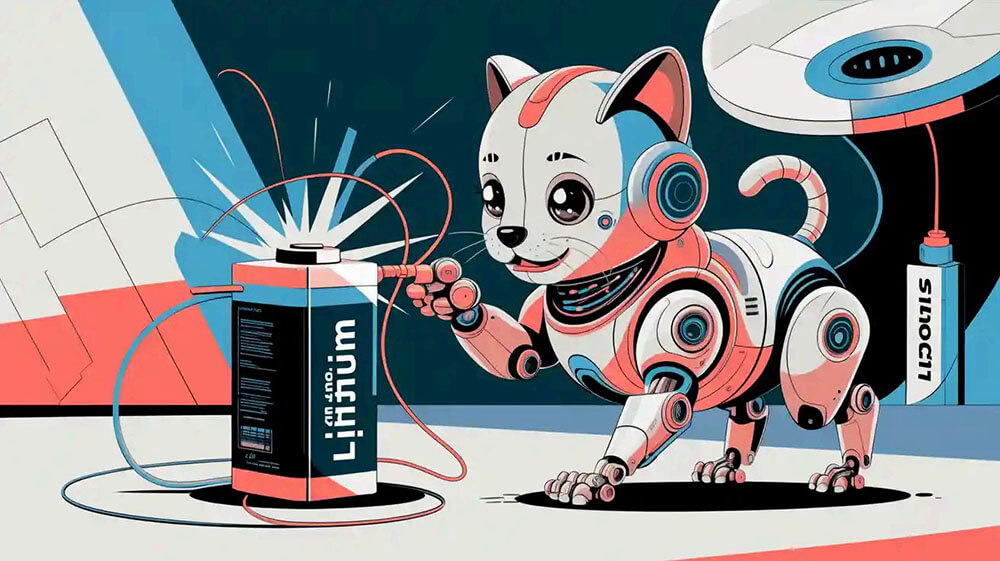Contents
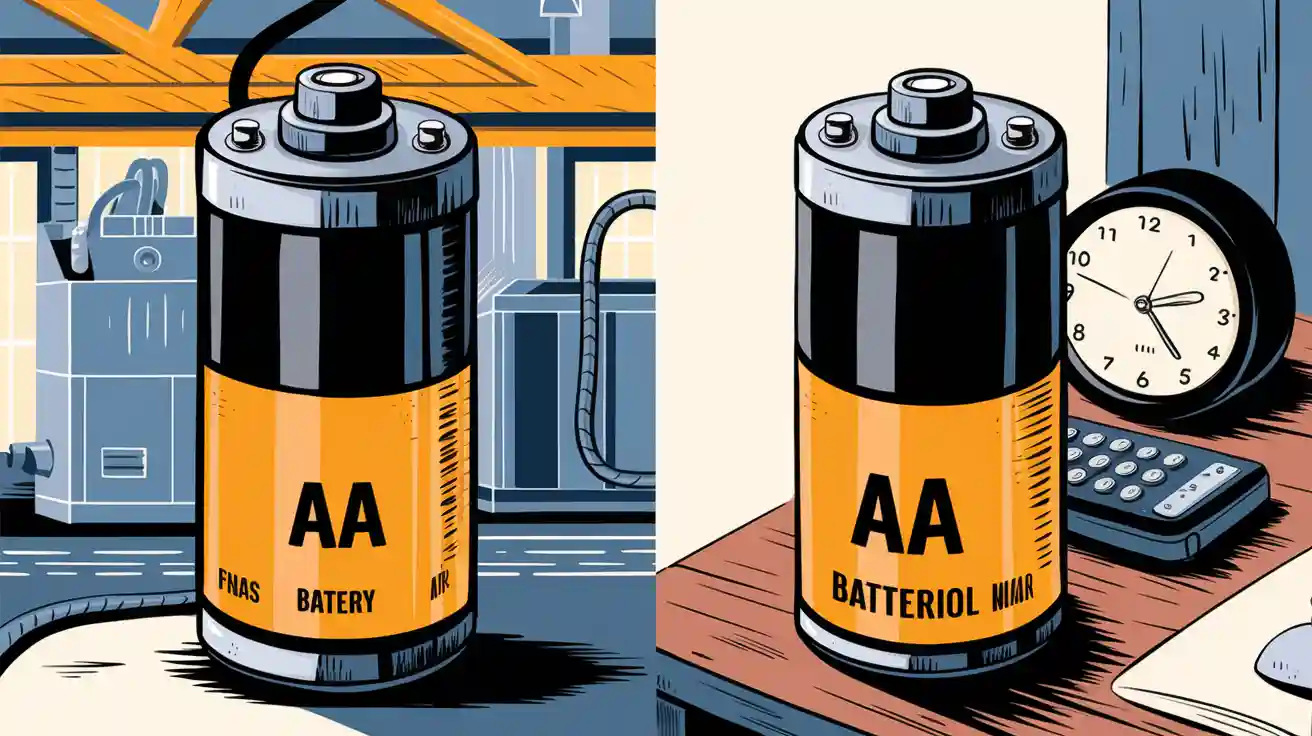
Understanding the differences between industrial battery vs regular battery is essential for businesses seeking efficient power solutions. Industrial batteries are designed for demanding environments, while regular batteries cater to lighter, everyday applications. Selecting the right battery technology improves operational efficiency and meets industry-specific energy needs. Lithium technology plays a pivotal role in enhancing performance across both categories, offering reliability and sustainability.
📊 Market trends reveal growing demand for tailored battery solutions in sectors like healthcare and telecommunications. Choosing the correct battery type ensures optimal performance and cost-effectiveness.
Key Takeaways
Industrial batteries are made for tough jobs. They give strong power and last in harsh conditions.
Regular batteries are for daily use. They are easy to carry and cheaper for small gadgets.
Picking the right battery improves performance and saves money over time. This is important for both businesses and people.
Part 1: Industrial Batteries Overview
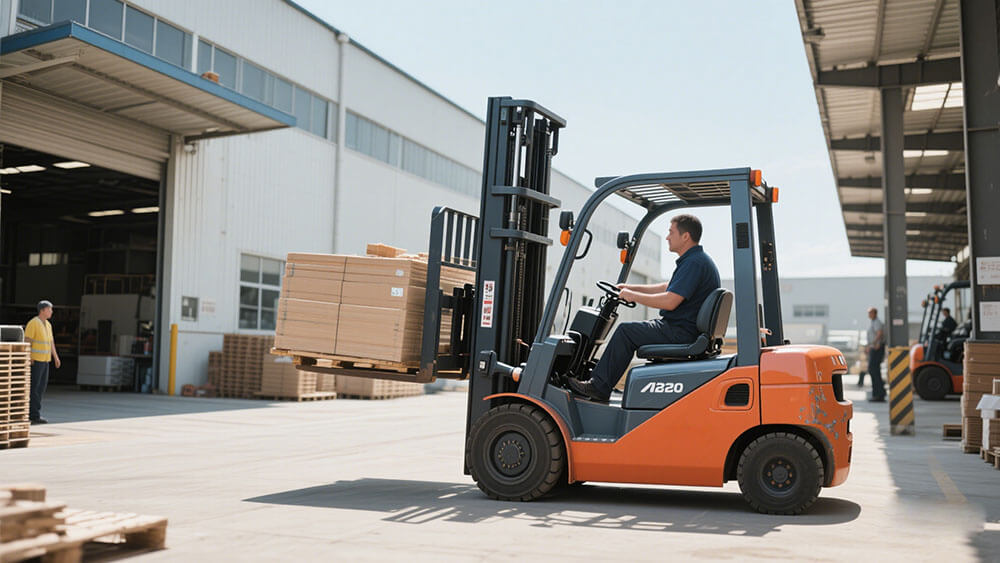
1.1 Definition and Characteristics
Industrial batteries are designed to meet the energy demands of heavy-duty applications. These batteries provide high power output, long operational life, and durability under extreme conditions. Unlike regular batteries, industrial batteries are built to handle continuous use in challenging environments, such as high temperatures or heavy vibrations. They often feature advanced materials like lithium-iron-phosphate (LiFePO4) for enhanced safety and stability.
Key characteristics of industrial batteries include:
High energy density for extended performance.
Robust construction to withstand harsh environments.
Compatibility with battery management systems (BMS) for optimized performance and safety.
1.2 Common Types of Industrial Batteries
Industrial battery types vary based on their design and application. Below is a table summarizing the most common types:
Type of Industrial Battery | Description |
|---|---|
Electric Lift Truck Batteries | Used in material handling equipment for efficient operation. |
Electric Mining Machinery Batteries | Designed for heavy-duty applications in mining operations. |
Railroad and Stationary Generator Batteries | Provide reliable power for rail systems and stationary applications. |
Flooded Batteries | Contain excess electrolyte fluid, requiring regular maintenance. |
VRLA Batteries | Valve regulated lead acid batteries that are maintenance-free and sealed. |
Lithium-ion batteries dominate the market due to their fast charging capabilities and compact design. They are widely used in electric vehicles and renewable energy systems.
1.3 Applications in Heavy-Duty Industries
Industrial batteries play a critical role in powering heavy-duty applications. These include construction machinery, telecommunications infrastructure, and renewable energy systems. The shift towards electrification in industries like construction highlights the growing demand for reliable and sustainable power solutions.
Key industrial battery uses include:
Supporting hybrid and electric fleets to reduce emissions and noise pollution.
Powering manufacturing processes to ensure consistent performance.
Storing energy in renewable energy systems for efficient utilization.
Lithium batteries, particularly those with LiFePO4 chemistry, excel in heavy-duty applications. Their safety, stability, and performance make them ideal for use in extreme climates.
🌱 Sustainability Tip: Learn how industrial batteries contribute to sustainable energy solutions from Large Power.
Part 2: Regular Batteries Overview

2.1 Definition and Characteristics
Regular batteries, also known as consumer batteries, are designed for everyday applications in small electronic devices. These batteries are typically compact, lightweight, and easy to use, making them ideal for powering portable gadgets. Unlike industrial batteries, regular batteries prioritize convenience and affordability over high-capacity performance.
Key characteristics of consumer batteries include:
Portability: Compact designs ensure easy integration into small devices.
Affordability: Cost-effective solutions for short-term or low-power needs.
Variety: Available in multiple chemistries, such as alkaline, lithium-ion, and nickel-metal hydride, to suit diverse applications.
Industry standards like TC35 and SC21 ensure the safety and reliability of these batteries. Examples include R20 and CR17345, which align with ANSI specifications for compatibility across devices.
2.2 Common Types of Regular Batteries
Consumer batteries come in various types, each tailored to specific applications. The table below highlights the most common types:
Battery Type | Description | Applications | Advantages |
|---|---|---|---|
Lead-acid | Oldest and reliable, uses lead dioxide and sulfuric acid. | Automotive, Backup Power | Cost-effective, widely available |
Nickel-Cadmium (Ni-Cd) | Uses nickel oxide hydroxide and cadmium. | Portable Electronics | Rechargeable, stable voltage |
Nickel-Metal Hydride | Combines nickel oxide and hydrogen-absorbing alloy. | Digital Cameras | Higher capacity, environmentally friendly |
Lithium-Ion (Li-ion) | Uses lithium cobalt oxide and graphite. | Smartphones, Laptops | High energy density, no memory effect |
Alkaline | Contains manganese dioxide and zinc. | Remote Controls, Flashlights | Long shelf life, cost-effective |
Zinc-Carbon | Uses zinc chloride and manganese dioxide. | Clocks, Toys | Economical, widely available |
Coin Cell | Small, button-shaped batteries. | Watches, Medical Devices | Compact, low self-discharge |
Among these, lithium-ion batteries dominate the market due to their high energy density and rechargeability. Alkaline batteries remain popular for low-drain devices like remote controls and clocks, thanks to their long shelf life and cost-effectiveness.
2.3 Applications in Consumer Electronics
Consumer batteries power a wide range of everyday electronics. Their versatility and affordability make them indispensable in modern life. Common applications include:
Smartphones and Laptops: Lithium-ion batteries provide reliable, long-lasting power.
Wearable Devices: Compact coin cells ensure extended operation in fitness trackers and smartwatches.
Digital Cameras: Nickel-metal hydride batteries offer higher capacity for photography enthusiasts.
Remote Controls and Flashlights: Alkaline batteries deliver cost-effective solutions for low-drain devices.
Medical Devices: Coin cells and lithium-ion batteries ensure precision and reliability in critical equipment.
Disposable batteries, such as alkaline and zinc-carbon, are widely used for their convenience and affordability. Rechargeable options, like lithium-ion and nickel-metal hydride, cater to devices requiring frequent power cycles. The global market for consumer batteries is projected to grow significantly, driven by advancements in portable electronics and renewable energy integration.
Part 3: Industrial Battery vs Regular Battery: Key Differences
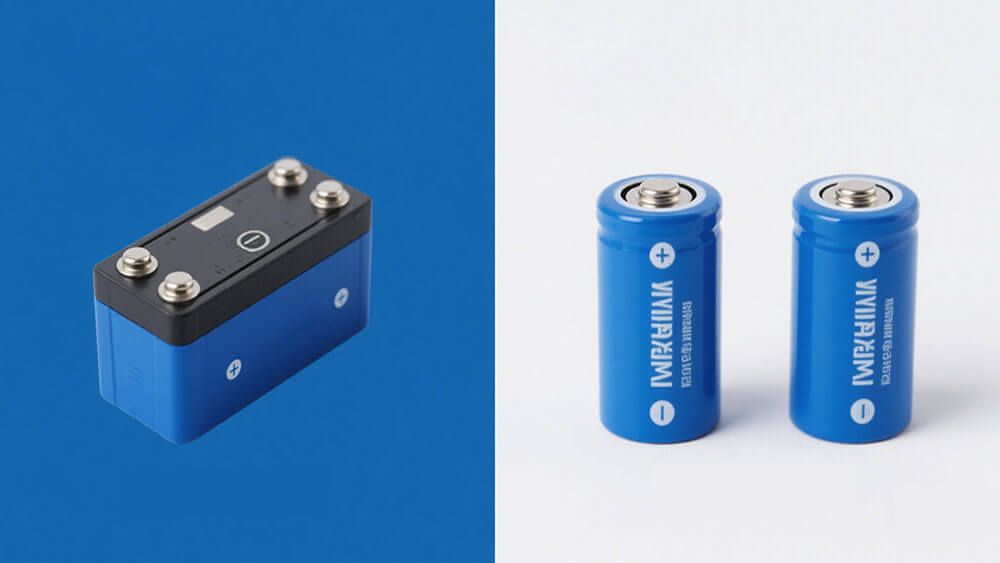
3.1 Size and Capacity
Industrial batteries are designed with larger dimensions and higher capacities to meet the demands of heavy-duty machinery and battery storage systems. These batteries often power equipment requiring sustained energy output over long periods. In contrast, regular batteries are compact and optimized for small devices with lower energy needs.
Feature | Industrial Batteries | Regular Batteries |
|---|---|---|
Size | Larger, suitable for industrial-scale applications | Smaller, ideal for portable consumer devices |
Capacity | Higher capacities, measured in kilowatt-hours (kWh) | Lower capacities, typically measured in milliamp-hours (mAh) |
Capacity measurements for batteries often rely on methods like charge/discharge cycles or reserve capacity (RC). Industrial batteries, especially lithium-ion variety, demonstrate consistent performance during discharge testing, making them ideal for high-capacity applications.
3.2 Performance and Lifespan
Industrial batteries outperform regular batteries in terms of longevity and recharge cycles. They are engineered to handle up to about 5,000 recharge cycles, compared to fewer than 500 cycles for regular rechargeable batteries. This extended lifespan ensures reliability in critical applications like manufacturing and telecommunications.
3.3 Durability in Extreme Conditions
Industrial batteries are built to endure harsh environments, including extreme temperatures, humidity, and mechanical stress. Testing ensures these batteries resist corrosion, overheating, and degradation. Regular batteries, while suitable for everyday use, lack the rugged construction needed for industrial applications.
Industrial batteries undergo environmental stress tests to evaluate performance under extreme conditions.
These tests assess resistance to vibrations, shock, and high humidity levels, ensuring durability in demanding settings.
3.4 Cost and Value for Businesses
The cost comparison between industrial and regular batteries highlights their distinct value propositions. Industrial batteries have higher upfront costs due to their robust construction and advanced materials. However, their longevity and lower long-term costs make them a cost-effective choice for businesses. Regular batteries, while affordable initially, require frequent replacements, increasing overall expenses.
Feature | Industrial Batteries | Regular Batteries |
|---|---|---|
Upfront Cost | Higher due to advanced materials and design | Lower, suitable for short-term use |
Long-Term Costs | Lower, thanks to extended lifespan | Higher, due to frequent replacements |
3.5 Rechargeability and Maintenance
Rechargeable batteries dominate the industrial sector, offering high cycle counts and minimal maintenance requirements. Lithium-ion batteries, in particular, excel in this regard. Regular batteries, while available in rechargeable options, often prioritize convenience over longevity. Proper maintenance programs are essential for maximizing battery performance and safety.
Industrial batteries require periodic maintenance, such as state monitoring and balanced charging.
Neglecting maintenance can lead to performance issues, especially in high-capacity systems.
3.6 Environmental Impact and Recycling
Industrial batteries, due to their size, have a significant environmental footprint. However, many are designed for recycling, with lead-acid batteries achieving a 99% recycling rate. Regular batteries contribute to waste, but rechargeable options help mitigate their ecological impact.
Recycling programs for industrial batteries reduce waste and create raw materials for new products. This aligns with sustainability goals and minimizes the ecological footprint of battery disposal. For customized solutions tailored to your industry, visit Large Power.
Part 4: Choosing the Right Battery for Your Applications
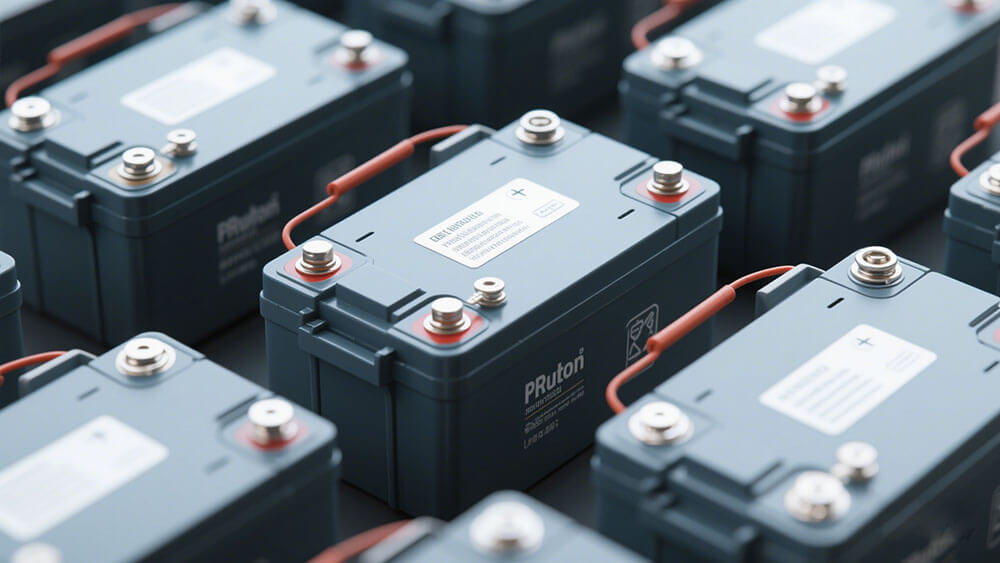
4.1 Assessing Industrial vs Consumer Needs
Selecting the right battery begins with understanding your specific application requirements. Industrial applications demand batteries capable of handling high power outputs, extended operational hours, and extreme environmental conditions. Consumer needs, on the other hand, prioritize portability, affordability, and ease of use.
Key factors to consider include:
Power Requirements: Industrial batteries support heavy-duty equipment, while consumer batteries power smaller devices.
Operational Environment: Industrial batteries withstand harsh conditions like high temperatures and vibrations.
Regulatory Compliance: Medical and industrial applications often require customized testing to meet safety and reliability standards.
🔍 Insight: Advanced testing revealed that only one out of five battery suppliers met stringent medical device requirements. This highlights the importance of thorough evaluation during the selection process.
4.2 Evaluating Long-Term Performance and Cost
Long-term performance and cost efficiency are critical for industrial applications. Lithium-ion batteries have revolutionized the market with their declining costs and improved energy density.
Over 30 years, battery costs have decreased by 99%.
Energy density has increased fivefold, enhancing efficiency.
For every doubling of deployment, costs have dropped by 19%.
💡 Tip: Investing in lithium-ion batteries ensures long-term savings and operational efficiency for industrial applications.
4.3 Considering Environmental and Sustainability Goals
Sustainability plays a vital role in battery selection. Industrial batteries contribute to decarbonization in sectors like mobility and energy storage. End-of-life management and recycling are equally important.
FIAMM batteries are 99% recyclable, showcasing the potential for sustainable practices.
Life Cycle Assessments (LCAs) reveal that EVs powered by lithium-ion batteries significantly reduce greenhouse gas emissions compared to gasoline vehicles.
Reliable data and third-party verification ensure accurate environmental impact evaluations.
4.4 Why Lithium Batteries Are Ideal for Industrial Use
Lithium batteries offer unmatched advantages for industrial applications. Their superior performance, longevity, and low maintenance requirements make them a preferred choice.
Advantage | Lithium Batteries | Lead-Acid Batteries |
|---|---|---|
Service Life | up to 5,000 cycles | Fewer than 500 cycles |
Maintenance | Minimal | High maintenance needs |
Charging Time | Rapid charging and opportunity charging | Long recharging times |
Operational Efficiency | Greater production continuity and ROI | Degrades quickly, leading to downtime |
Lithium batteries deliver higher instantaneous energy outputs, ideal for construction machinery.
Their sealed construction ensures safe deployment in rugged environments.
Faster charging capabilities and over 2,000 charge cycles enhance productivity.
Understanding the differences between industrial and regular batteries ensures you select the right solution for your business. Industrial batteries excel in heavy-duty applications with higher capacity, durability, and long-term cost efficiency. Regular batteries suit smaller devices with lower energy needs.
Feature | Industrial Batteries | Regular Batteries |
|---|---|---|
Size | Larger | Smaller |
Capacity | Higher | Lower |
Initial Cost | Higher | Lower |
Long-term Cost | Lower (due to longevity) | Higher (due to replacements) |
Lithium battery technology offers unmatched performance for industrial use. Its longevity, rapid charging, and minimal maintenance maximize operational efficiency. Choosing the right battery optimizes performance and reduces costs. For customized solutions tailored to your industry, visit Large Power.
FAQ
1. What are the main differences between industrial and regular batteries?
Industrial batteries are designed for heavy-duty applications, offering higher capacity and durability. Regular batteries are compact, affordable, and suitable for powering small consumer devices.
2. Can regular batteries be used in industrial applications?
No, regular batteries lack the capacity and durability required for industrial environments. They are unsuitable for high-power or long-duration applications.
3. How do you choose between industrial and regular batteries?
Evaluate your power needs, operational environment, and budget. Industrial batteries suit heavy-duty systems, while regular batteries work best for portable, low-power devices.
Tip: For sustainable battery solutions, explore Large Power’s guide.



